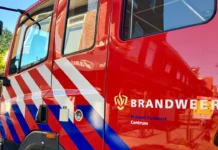From an early age, words like culture, art, or society would make me sit up straighter in class. On the other hand, words like technology, mathematics, and Gross National Product would automatically make me switch off. The associations I had with those words were almost like colours to me, and the metallic black and dark blue tones of technology left me cold-blooded, whereas the association of culture with the colour red drew me in. It never occurred to me that blue and red could combine into a magnificent purple.
When I drove past the Evoluon the other day, I realised I’d never known exactly what it was. Yes, it was the only building in the entire city that had any appeal to me as a child. In fact, it is the kind of thing kids would design if they had a say, right? But to this day, I’ve never set foot inside. For me, the UFO-shaped structure on the outskirts of the city centre has always been just that: an Unidentified "Field" Object.
The Evoluon is an emblem of Philips more than anything. It was Frits Philips and Louis Kalff in the late fifties, who, over dinner, discussed the possibilities of a permanent exposition reminiscent of the successful Philips Pavilion at the World Expo of 1958 in Brussels. The Evoluon grew out of that and opened to the public in 1966. That’s right: it opened to the public. The technology and innovation of Philips were presented as informative spectacle to a huge international audience for over 20 years. In a way, technology became culture. Unfortunately, the Evoluon closed to the public in 1989 and I was too young then to have ever visited the exhibition.
My grandparents in Amsterdam did take me to something quite similar a few years later – or, something I imagine would have been quite similar. It was called NINT and was located in the building of the Royal Asscher Diamond Company in Amsterdam. It had all kinds of technological curiosities and experiments, but specifically for children. I had the time of my life there creating huge soap bells and freezing my own shadow. The association with technology as metallic black and blue colours did not occur to me then. I was in creative heaven. NINT later became NEMO and is now housed in the huge green ship-like building on the IJ. (You can see it on your left as the train from Eindhoven rolls into Amsterdam Central Station.) You could say NEMO is Amsterdam’s Evoluon. But not quite.
The Evoluon is tied to Philips. Philips is tied to Eindhoven. And Philips is tied to technology. Hence, Eindhoven: city of technology and innovation. In that light, it’s a shame that a building with such symbolism now functions as a conference hall. (There was a reason I never stepped foot in it.) But there’s hope. Just last week, the Evoluon made its debut as a concert hall, hosting Kraftwerk, German pioneers of electronic music. That’s genius. A perfect symbiosis of technology and culture on many levels. And this symbiosis is characteristic of the city, as we witness for example with the annual light art festival Glow, or the upcoming Dutch Design Week. Eindhoven: city of technology as culture, of technology becoming culture. Eindhoven: purple city. I do like purple.
Rianne Freriks
















